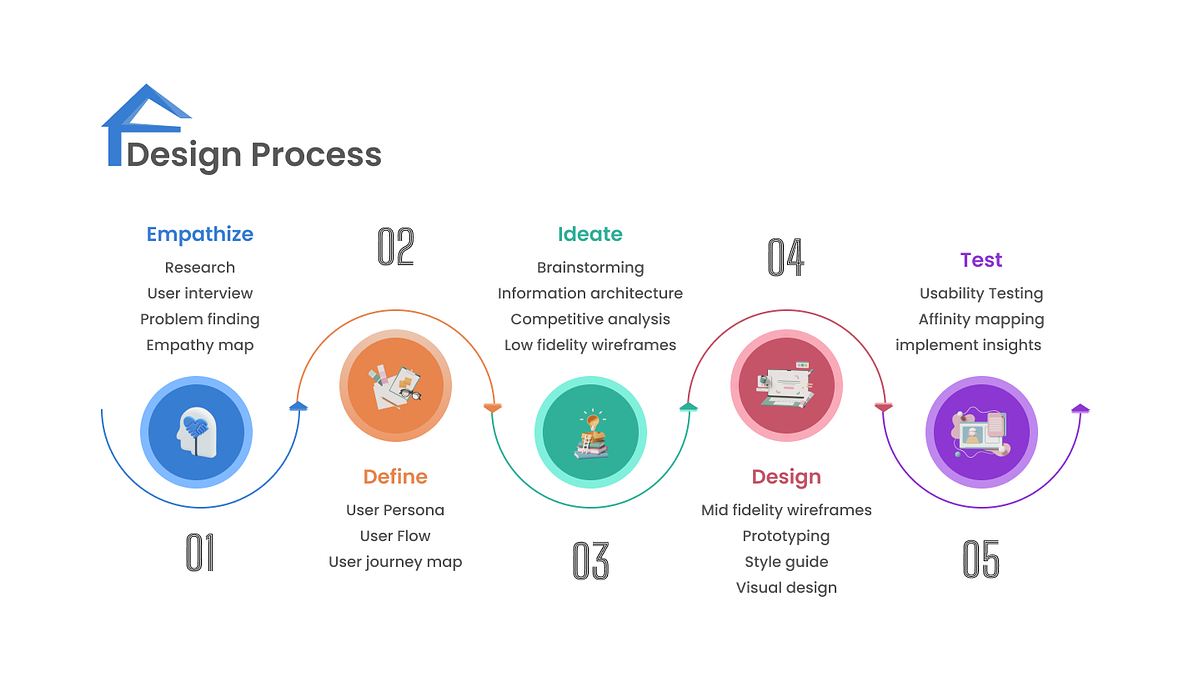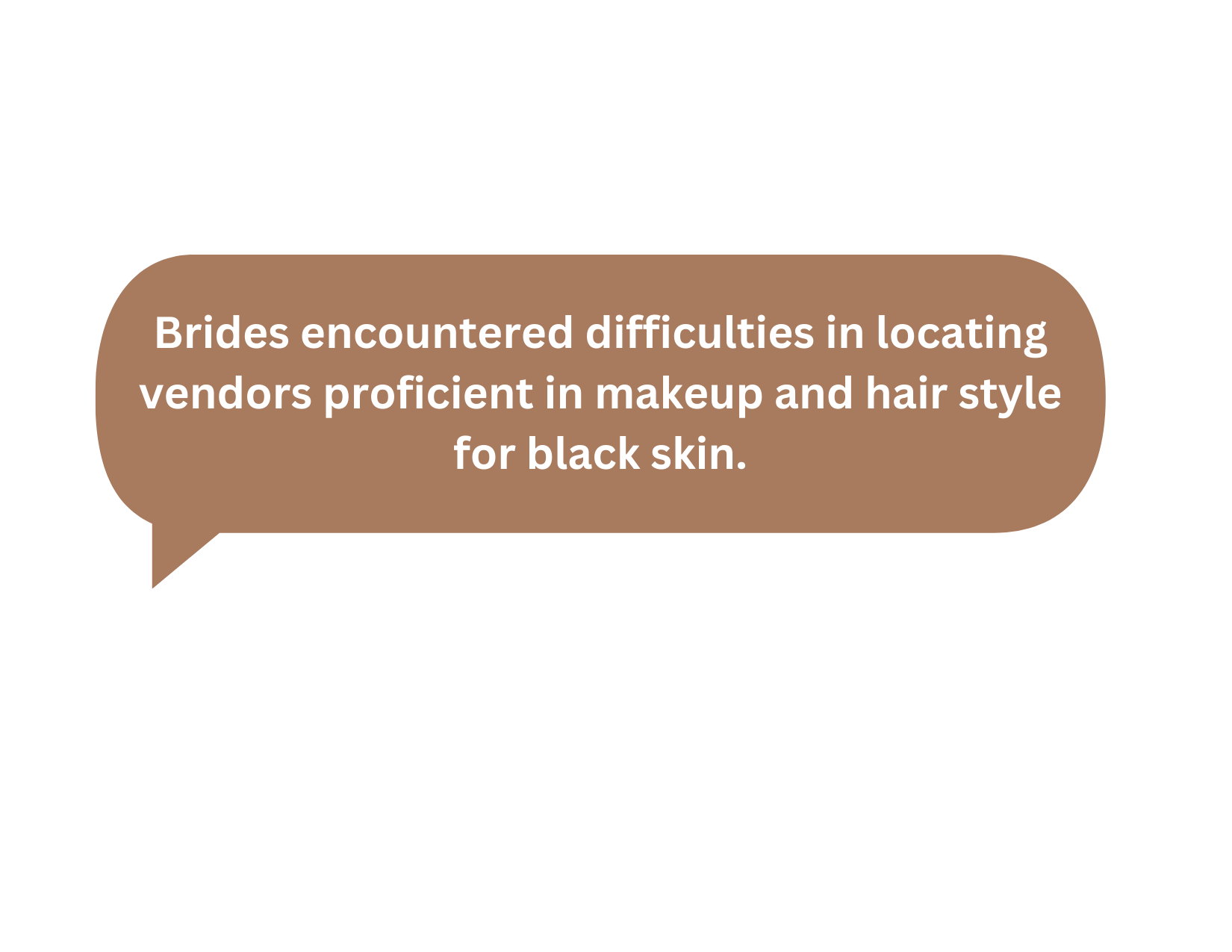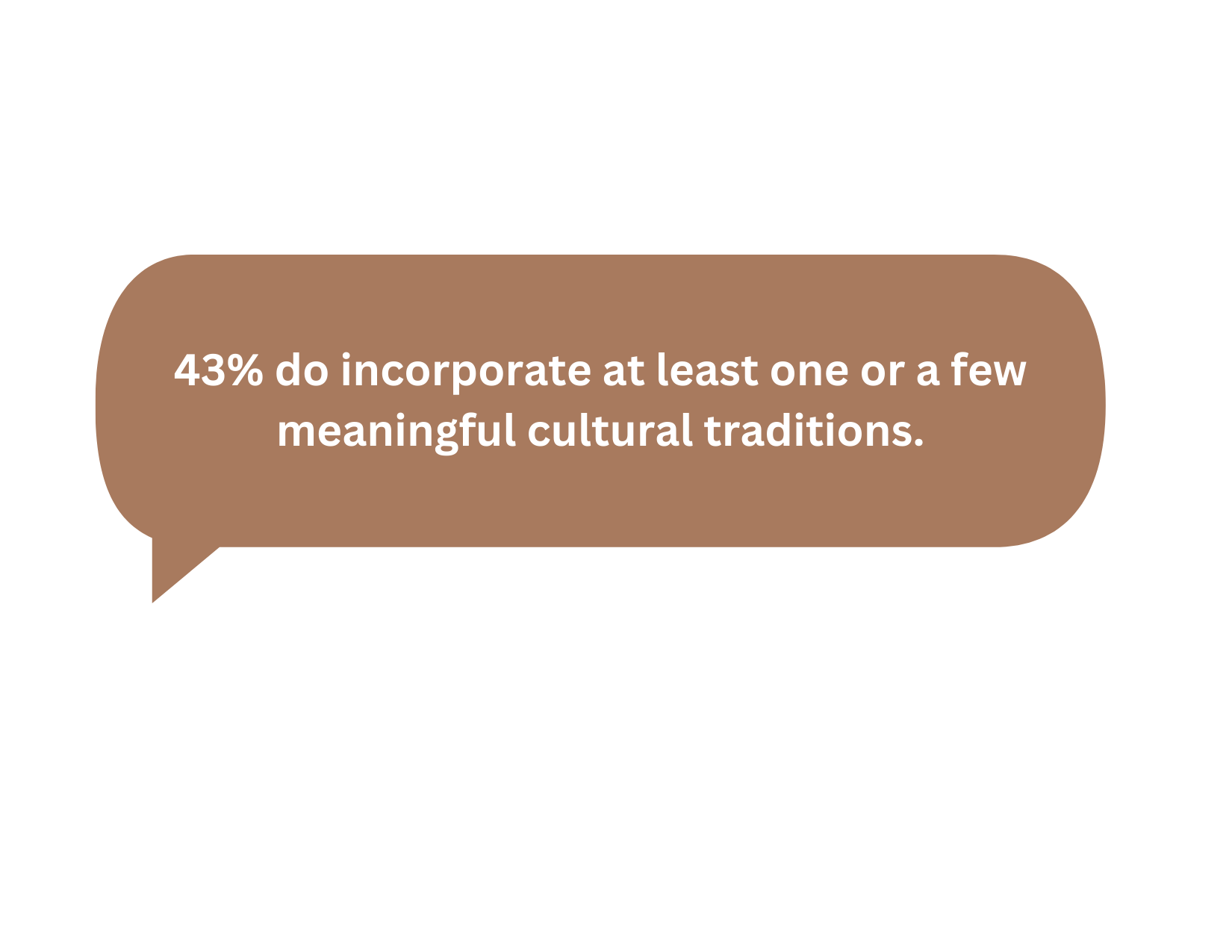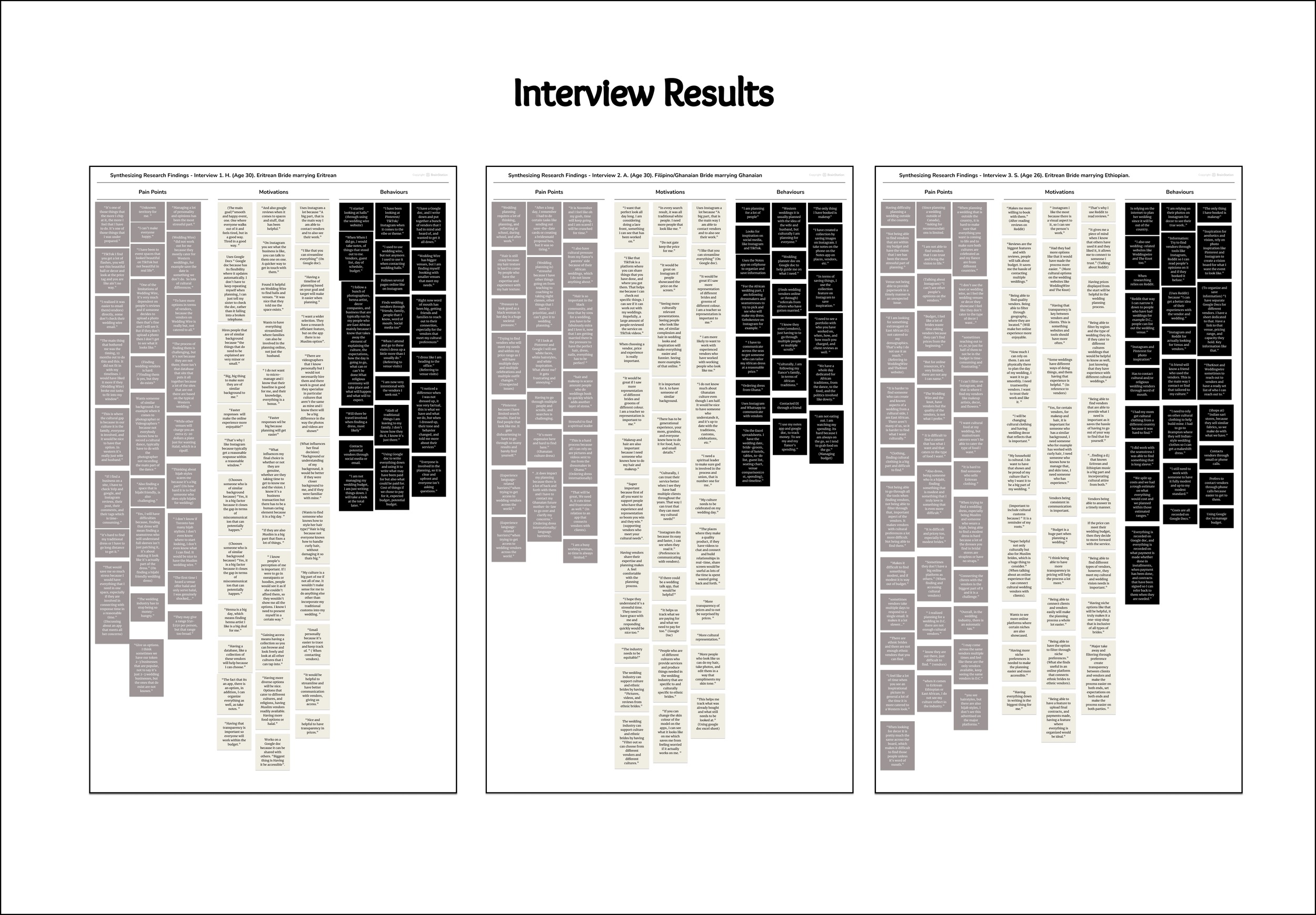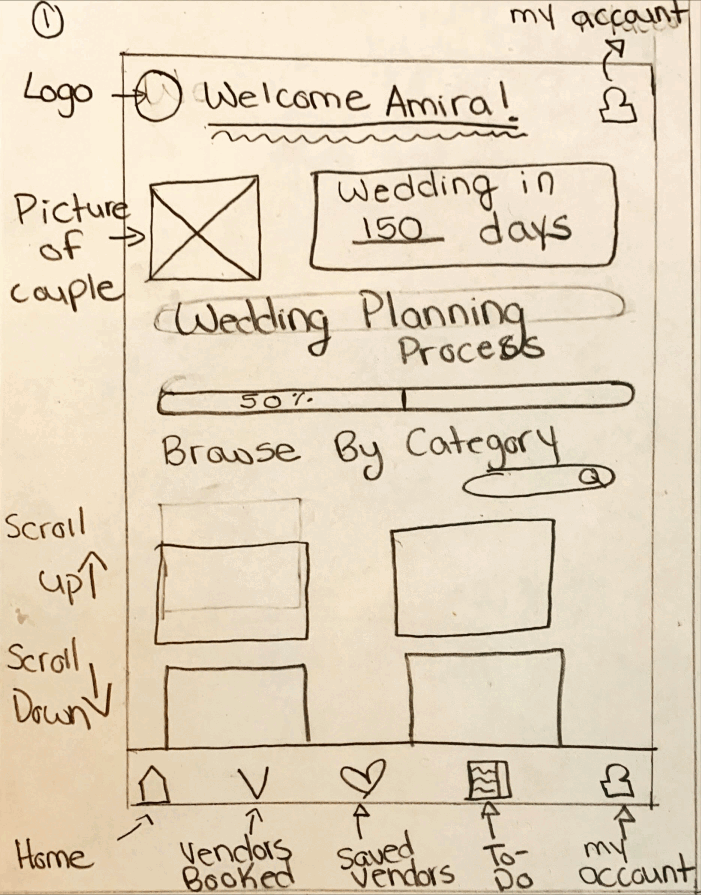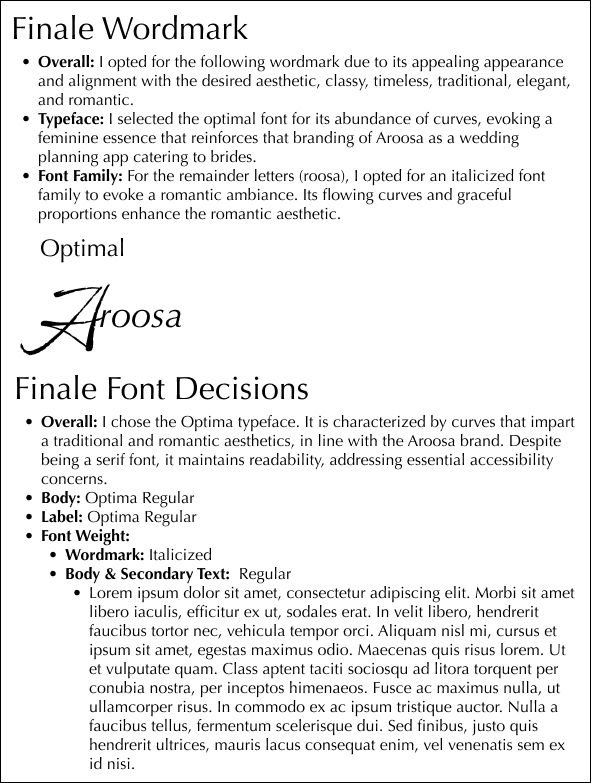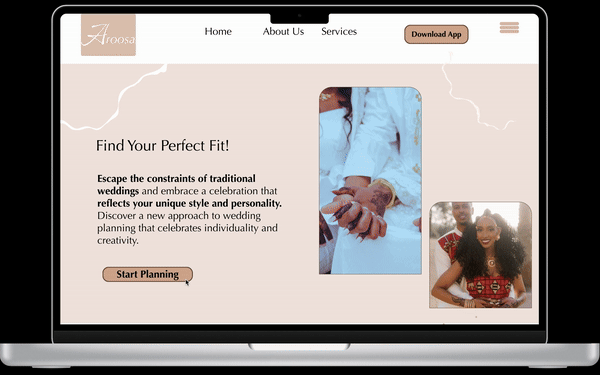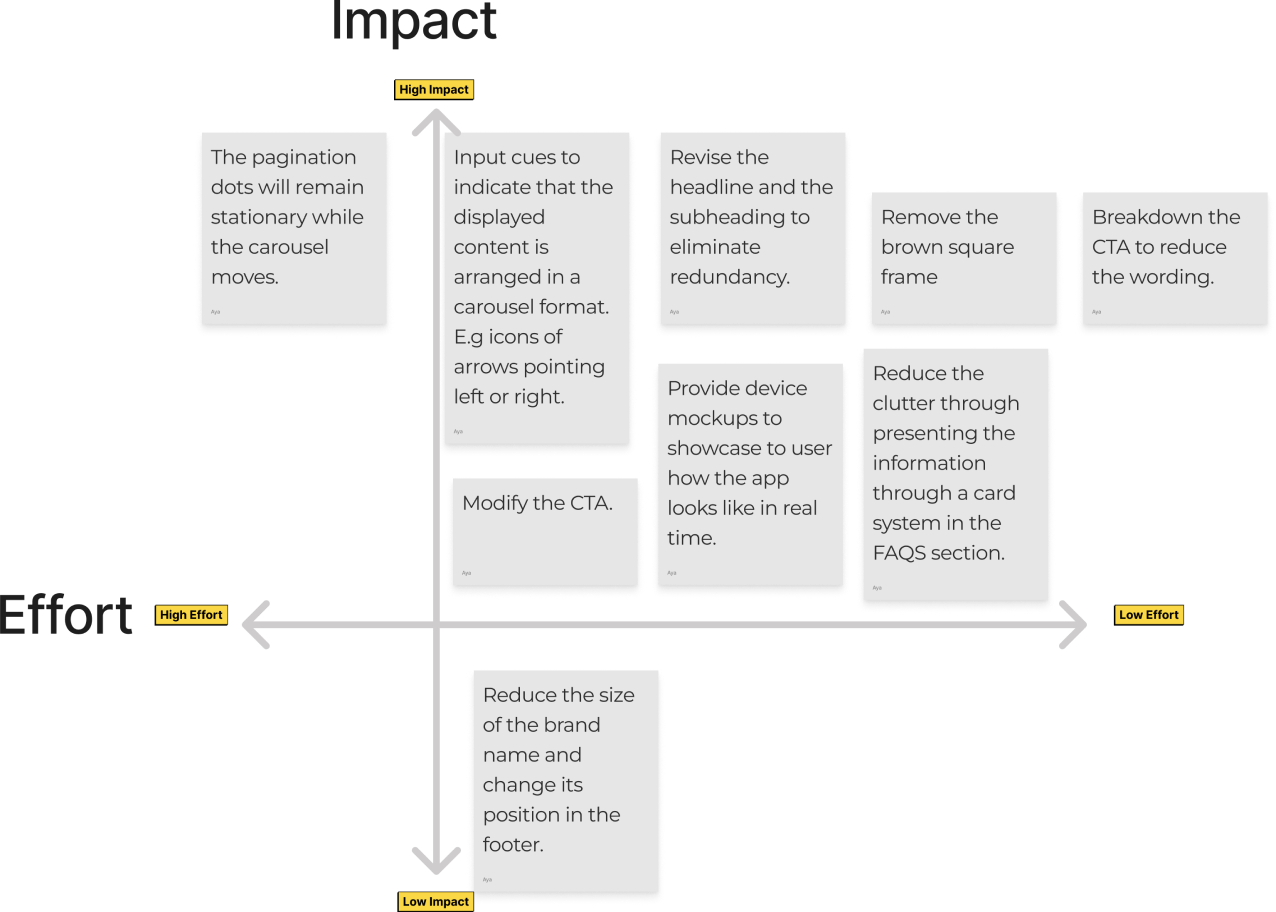Connecting Ethnic Brides to Ethnic Vendors: A Case Study
Empowering Cultural Celebrations, One Connection at a Time!
Aroosa: Facilitating the journey for brides of various ethnic backgrounds by connecting them with vendors who understand and can cater to specific cultural and religious traditions, ensuring every detail is tailored to their unique needs and desires.
Role: UX Designer
Duration: Oct 2023-May 2024 (8 months)
Tools: Figma
Problem: Ethnic brides encounter difficulties in efficiently locating vendors who cater to their cultural and religious needs while planning their wedding.
Impact: Simplify the search process for brides seeking vendors who honour their cultural and religious customs.
Five Phases To Complete This Case Study
To start things off, I enthusiastically dove into the dynamic world of design thinking, ready to embark on an exhilarating ride through its five distinct phases.
Discovery Of Problem Space
💡
Discovery Of Problem Space 💡
Discovery of Problem Space:
Ethnic brides consistently encounter challenges when finding ethnic vendors that meet their cultural and traditional needs.
Meet Amira 🧕🏽
We begin our exploration by uncovering Amira's main hurdles in the wedding planning process.
As the go-to friend for event planning, I am no stranger to the casual chatter of “I know someone who knows someone” during wedding prep. It’s a familiar scene as the mainstream wedding planning industry all had one thing in common, lack of visibility of diverse wedding traditions and customs. As I found myself navigating countless weddings, I couldn't help but wonder, how can we simplify this process as it became evident that finding vendors who truly understand and can cater to cultural and religious needs was far from easy.
Realizing this gap in the wedding planning process, I felt inspired to pursue this project, anchored in the belief that every bride should feel fully embraced and understood in all aspects of her wedding arrangements.
How Might We help culturally ethnic brides gain access to a diverse range of wedding vendors that align with their cultural preferences, ensuring that their traditions are celebrated and represented on their wedding day?
Secondary Research
📚
Secondary Research 📚
Secondary Research:
Do these challenges extend beyond just me, or do they affect others as well?
Through my secondary research here are some challenges and insights into what brides face today:
Many brides face challenges in finding vendors that can cater to their needs. According to an article by NBC News, they found that ethnic brides wanted a photographer that highlighted their natural colour (NBC).
According to The WeddingWire:
Primary Research
🎤
Primary Research 🎤
Primary Research:
What’s the bride buzz?
To delve deeper into the obstacles brides encounter, their typical behaviour and the driving forces behind them, I interviewed three brides who are currently planning their weddings.
The participant criteria included:
Bride
Bride from an ethnic minority background
Bride is currently planning their wedding
With the information gathered, I then divided the insights into attitudes, motivations, and challenges, creating an affinity map.
Affinity Map
Through the affinity maps, their shared insights and frustrations was divided into the following themes.
-
Brides-to-be highly prioritize the celebration and incorporation of their cultural and religious traditions on their wedding day. Nevertheless, many encounter challenges in accessing a diverse array of wedding vendors capable of meeting their cultural and religious requirements.
-
The lack of upfront pricing for services poses an inconvenience. Brides-to-be prefer transparent pricing, as it streamlines the process and saves time. Given the considerable expenses associated with the wedding industry, having costs readily available helps brides-to-be assess whether vendors fit within their budget constraints.
-
Numerous brides leverage online platforms for vendor outreach via Instagram, peruse past client reviews on Reddit, and streamline their planning process through Google Docs. Many have voiced the convenience of a singular platform where they can seamlessly manage tasks—from vendor communication to review browsing and documentation—eliminating the need to juggle multiple platforms simultaneously.
Experience Map
🗺️
Experience Map 🗺️
Experience Map:
Centering the user’s needs and experience will continue to guide my design directions.
Based on the insights gathered from the interviews, I gained a deeper understanding of the challenges experienced by ethnic brides during wedding planning. My research enabled me to develop an experience map to identify the users’ pain points, behaviours, and motivations more effectively.
Experience Map
Task Selection
⤵️
Task Selection ⤵️
Task Selection:
Narrowing Focus: Addressing one task at a time amidst multitude of challenges
After examining the experience map, I pinpointed a chance for design enhancement: offering brides an online platform that links them with various wedding vendors catering to their ethnic preferences. I then created a set of 28 user stories leading to three epics, to help me define the function of the task and my product. This approach aims to tackle brides' frustrations, objectives, and behaviours effectively.
The 28 user stories were divided into the following three epics:
Connect with Ethnic Vendors
Connecting with other Ethnic Brides
Creating a Unified Wedding Planning Process
User Stories
Assessment & Evaluation:
I decided to focus on the following epic “ Connect with Ethnic Vendors” and the following user story “ As a bride, I want to find cultural clothing so that I can authentically represent and celebrate my heritage on my big day as a way to represent my cultural identity”. I chose this epic and user story as it addresses the HMW statement of seamlessly connecting brides to ethnic vendors to ensure the bride feels celebrated and represented on her wedding day. Cultural attire in numerous ethnic backgrounds is intricately crafted and can be challenging to locate without the right connections. It’s common for brides to wear more than one wedding dress, underscoring the significance of finding the right vendor.
Task Flow:
Once I pinpointed my primary task, I crafted a task flow envisioning how a user would engage with the product to accomplish the task. The following task flow illustrates the user journey of finding cultural attire for her wedding day, ensuring her cultural identity is authentically represented.
UI Inspiration Board
🎨
UI Inspiration Board 🎨
UI Inspiration Board:
Turning to existing designs for inspiration as I embark on my design journey
Now that I had figured out the task and the user flow, it was time to create sketches, however, I faced uncertainty about the product’s design direction. To overcome this challenge, I opted to develop a UI inspiration board, which would guide me in defining my solution’s features, functionality, and layouts. This helped me envision the specific ambiance I wanted to cultivate for the product. Click here to view the full details of the UI Inspiration Board.
Sketching & Wireframes
✍🏽
Sketching & Wireframes ✍🏽
Sketching & Wireframes:
Seeking inspiration and experimenting with layout designs through the traditional method of pen and paper.
Now that I had an overall idea of the design that I wanted to take my product, I began sketching out my ideas until I came up with the final sketch iteration. Using inspiration from other existing UI components and looking at functionalities from other apps like The Knot, I started to sketch out different ideas.
Following the sketches, I proceeded to develop wireframes. Click here to view the wireframes.
Usability Testing
🧑💻
Usability Testing 🧑💻
Usability Testing:
Usability Testing: Enhancing experiences, validating design, maximizing satisfaction
I proceeded to transform my sketches into low-fidelity prototypes. This step was pivotal as I utilized the prototypes to conduct usability tests, aiming to gather feedback for enhancing user experience, app functionality, and usability. I created the first lo-fi wireframe, which underwent five usability tests in which the participants had to complete 6 tasks. Based on the feedback I collected during the first round of usability testing, I refined the designs for the next wireframe iteration.
Click here to access detailed notes on both usability tests. Session Output Document 1 and Session Output Document 2
Methodology:
Two rounds of usability testing
10 users throughout my iteration
5 users for each round
Participants were recruited through word of mouth, friends, and families.
Sessions were conducted via Google Meet, and information was collected through notes on Google Documents.
Constraint:
Facing a tight deadline, I encountered a time constraint with both usability testing sessions requiring quick turnarounds. Consequently, I had to conduct the testing and iterations between sessions within a 10-day timeframe.
Solution:
I employed efficient documentation methods, such as using standardized templates or tools like Google Docs, to streamline note-taking and reporting, saving time without compromising quality.
I prioritized feedback from the initial session to quickly identify and address critical issues, allowing for more targeted improvements in subsequent sessions.
-
What Went Well:
✅ 100% of all participants were able to complete the tasks.
✅ Having items categorized helped users easily locate the desired items.
✅ All users enjoy d being able to message the vendor directly.
Changes That Will Be Made:
✍🏽 Scroll icons will be added to the wireframes
✍🏽 Personal detailed section will be bolded and an arrow will be included to draw the users’ attention to this section of the app.
✍🏽 The title on the chat section will be changed from Keren Couture to Chat with Keren Couture
✍🏽 Create a separate screen dedicated to chatting with vendors.
✍🏽 Create a confirmation screen
✍🏽 Add days of the week on the calendar.
-
By conducting usability testing, I gained deeper insights into overlooked errors and subtle obstacles. This process is crucial for facilitating iterative improvements that truly cater to users' needs, thereby enhancing their overall experience.
-
What Went Well:
✅ 100% of all participants were able to complete all tasks.
✅ All users enjoyed the personal details that were applied in the process.
Next Steps:
✍🏽 Clearly emphasize the purpose of the progress bar.
✍🏽 Include a drop-down menu when users are searching in the input field.
✍🏽 Center align all elements into either left, right, or center.
✍🏽 Add a rating for each vendor to help users assess the different vendors.
-
Adding a search option on the vendor selection page can help minimize the time spent searching for vendors, especially when users already know which vendor they are seeking.
Including additional images would foster a sense of trust, as having only two images on the Keren Couture page creates a questionable impression.
Ensuring that texts are presented conventionally. Reading the date on the booking the appointment page felt unconventional and led to challenges in comprehension and readability.
Clarity on the homepage is a necessity. Regarding the displayed percentage, the app should specify what the 50% pertains to.
The significance of having reviews, is that they provide an opportunity to assess detailed feedback from other users beyond just the rating. Accessing more reviews can increase user interest in visiting a vendor.
Following two rounds of usability testing, I proceeded to develop my prototype. To View The Entire Prototype Click Here
Visual Identity
🎭
Visual Identity 🎭
Visual Identity:
Adding the Little Touches That Makes A Difference!
Now that I had the final flow prototyped, it was time to add life to the prototype. I began to think of adjectives that fit the brand identity.
Adjectives Aligned With The Aroosa’s Identity
More A, Less B
This list helped me highlight what needs to be enhanced while eliminating elements that may detract from the user experience.
Moodboard and Brand Colours:
Using the adjectives and the more A, less B list guided my search for a moodboard that embodies the desired look and feel of Aroosa. After composing the moodboard, I extracted hues from it to facilitate the development of primary and accent colors, ultimately resulting in the establishment of the brand's finalized color scheme. To see the complete process of crafting the brand's visual identity, please click here.
Typography:
The following stage comprised identifying the most suitable typography to match the desired ambiance. To explore this further, I crafted a typography moodboard embodying romantic, elegant, dreamy, and traditional attributes. Considering these qualities, I ultimately chose the Optima font as it epitomizes romance, tradition, and sophistication. Optima's curved lines exude a traditional and romantic charm that resonates with the essence of the Aroosa brand. Despite being a serif font, it upholds readability, effectively addressing vital accessibility concerns. To see the complete process of crafting the typography, click here.
Logo Development
🖥️🎨
Logo Development 🖥️🎨
Logo Development:
The Importance of a Name
As a wedding planning app for ethnic brides, I understand the significance of wordmarks in establishing brand identity and recognition. They serve as a visual representation of our values, style, and personality. Weddings are deeply personal and culturally significant for brides, so our wordmark must evoke a sense of belonging, trust, romance, and authenticity.
While considering various options for the brand name, my goal was to ensure uniqueness, recognizing the individuality of the wedding planning journey for each bride. I explored names that embraced this uniqueness, with an emphasis on diversity and celebrating different ethnicities, aligning with the app's central theme. After careful consideration, I narrowed it down to five choices:
Aroosa
Brides Best Friend
EthnicChic
Cultural Charm
Cultural Connection
After deliberation, I settled on Aroosa, a word meaning "bride" in Arabic. Across numerous cultures, the term "bride" holds significant meaning. As an Arabic speaker, I strive to integrate this cultural essence into the app I'm developing. It's designed to honor the varied experiences of ethnic brides and address the challenges they often face when seeking vendors.
I began crafting the wordmark by sketching numerous versions of the brand name, and exploring various text orientations, weights, sizes, and styles. Consistency in the overall look and feel was paramount, mirroring my approach to typography. I opted for the Optima typeface for the initial letter, leveraging its romantic allure to complement the desired aesthetic. For the remaining letters (Roosa), I selected an italicized font family to evoke further romanticism. The fluid curves and elegant proportions of this font elevate the overall romantic appeal of the wordmark. To see the complete process of crafting the wordmark, click here.
High Fidelity
🔒
High Fidelity 🔒
High Fidelity:
From Monochromatic Prototypes To Vibrant Ones. Combining All Elements
After creating the finalized UI design, I designed and prototyped my final high-fidelity. To view the entire high-fidelity, click here.
Marketing Website
🖥️
Marketing Website 🖥️
Marketing Website:
Time to Promote Aroosa
After finalizing the Aroosa app, the subsequent phase involved its promotion, achieved through the creation of a responsive marketing website. I developed a website that is responsive and optimized for both desktop and mobile devices.
UI Inspiration Board:
The first step I took was to craft a UI Inspiration board to guide the creation of the look and feel, ensuring intentional designs that resonate with the essence of the Aroosa brand. To view the entire UI Inspiration board for desktop and mobile devices, click here.
Expanded Moodboard:
Alongside the initial mood board, I aimed to incorporate additional elements and inspiration from Aroosa, highlighting its romantic, elegant, and timeless essence. To view the entire expanded moodboard for the marketing website, click here.
Sketches:
Then, I advanced to exploratory and solution sketches for both desktop and mobile interfaces. I experimented with different arrangements to showcase product features, testimonials, hero sections, navigation bars, and footers across various layouts. Click here to view the sketches in details.
After numerous sketches, I refined my designs to two layouts each for desktop and mobile interfaces. To view the sketches, click here.
Peer-Reviewed Feedback
I then created a mid-fi wireframe for version 1 and version 2. Click here to access version 1 and version 2. The mid-fi wireframes were then presented to my fellow peers in which feedback was provided. The feedback aimed to address my concerns, which were:
Does the design effectively encourage visitors to download the Aroosa app?
Has my value proposition been clearly communicated, and does it resonate with the audience?
-
✅ Colour palette is inviting and fits the brand theme of elegance.
✅ The shape of the images being curved provides a feminine look that aligns with the Aroosa brand.
✅ Extensive use of descriptive language aligns with the nature of the site, as it pertains to a wedding planning app where brides may appreciate detailed information to aid in decision-making.
-
❌ The CTA is too long and wordy. Confuses the user.
❌ The brown square frame gives the design an outdated appearance.
❌ The search bar is distracting and does not serve a purpose for the visitors.
To view detailed feedback, critiques, and solutions for version 1 and version 2, click here.
Design Prioritization Matrix:
100% of my peers voted for version 1.
I utilized the critique provided and designed a design prioritization matrix to guide how I can improve the site from a user and marketing standpoint. I created a design prioritization matrix to evaluate and prioritize my design decisions based on user needs, project goals, and resource constraints.Click here to view the design prioritization matrix.
Changes Applied:
To view the changes applied, click here.
Final Prototype:
Click here to view the final prototype for version 1 for desktop and mobile devices.
Design Impact & Future Thinking
💬
Design Impact & Future Thinking 💬
Design Impact & Future Thinking
Reflection and planning ahead are vital for growth.
-
Streamlined Planning Process: Aroosa can simplify and streamline the wedding planning process for couples by providing centralized access to various tools, resources, and vendors, saving time and reducing stress.
Cultural Inclusivity: By connecting ethnic brides with ethnic vendors, Aroosa promotes cultural inclusivity and diversity in the wedding industry, offering tailored solutions that resonate with diverse backgrounds and traditions.
Empowerment: By empowering couples to take control of their wedding planning process, Aroosa encourages independence and autonomy, enabling them to make informed decisions and customize their weddings according to their preferences.
Efficient Vendor Selection: Aroosa minimizes wait times and simplifies vendor browsing and communication. Couples can swiftly explore and contact vendors, streamlining the selection process and reducing planning time.
-
Utilizing multiple versions and sketches throughout the design process enables designers to explore, assess, refine, and ultimately develop solutions that are most effective and user-centric.
Creating multiple versions helps mitigate the risk of relying solely on one design concept. By exploring diverse alternatives, designers can identify potential pitfalls early on and make informed decisions to mitigate risks and uncertainties that may not meet the brand’s identity.
Tarot Cards of Tech:
To further assess the impact of Aroosa, I utilized the Tarot Cards of Tech, which can be found here. Tarot Cards of Tech helped me gain insights into the app’s influence and potential outcomes. This approach provides a unique and creative framework for evaluating the app's effectiveness, and identifying strengths, weaknesses, opportunities, and potential challenges.
The following assessment focused on the card “The BFF’s”.
-
Answer: Using Aroosa can bring friends closer together as they explore each other's cultures while organizing their special day. However, it may lead to tension if there are disagreements over cultural traditions or preferences, potentially causing misunderstandings or conflicts.
-
Answer: Aroosa transforms how friends engage during wedding planning by facilitating deeper cultural understanding and collaboration. Friends can now explore each other's traditions, share ideas, and make joint decisions in a more inclusive and culturally rich environment. It enhances their bond by creating shared experiences and fostering mutual respect for each other's cultural backgrounds, ultimately strengthening their friendship throughout the planning process.
-
Answer: Aroosa serves to fulfill a role that was traditionally performed by wedding planners or individuals responsible for orchestrating weddings. By providing a platform where ethnic brides can directly connect with ethnic vendors, our product revolutionizes the wedding planning experience. It offers a comprehensive suite of services and resources, empowering users to take charge of their wedding preparations while benefiting from expert guidance and support from a diverse array of vendors.
App Development
👩🏽💻
App Development 👩🏽💻
App Development
What lies ahead for Aroosa?
-
Enhance the app's appearance to modernize it according to industry standards while still maintaining its traditional essence.
-
Incorporate features to enhance the wedding planning process, such as a notepad or a section to add friends. How can we improve the entire experience of the bride?
-
I will continue to conduct usability testing, as testing iteratively leads to enhanced outcomes.

